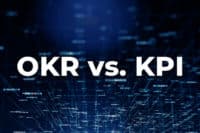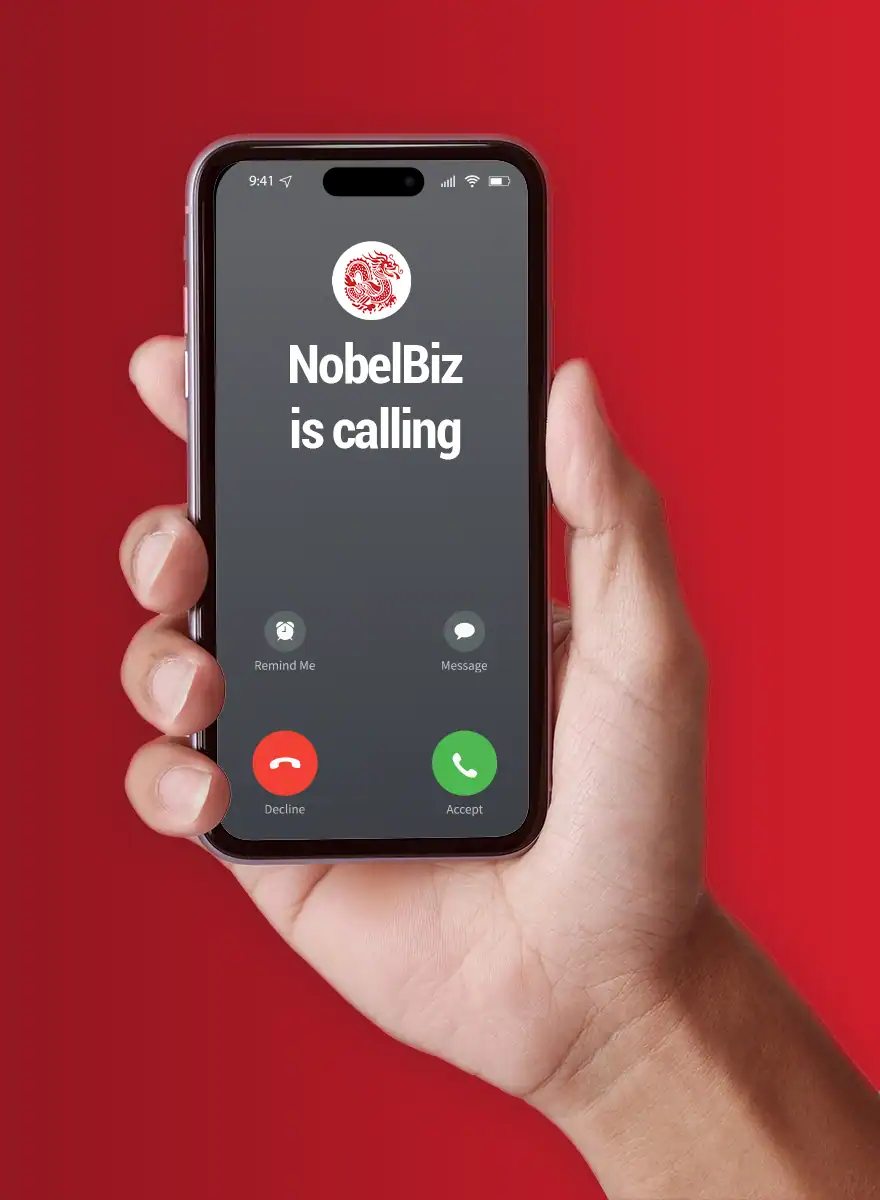Sharing your business goals with all your employees is critical for call centers. The more you disseminate the organization’s strategic orientation, the better the odds of success. As a result, it is vital to learn the various performance management and goal planning methods.
This article focuses on two indicators, the OKRs and the KPIs, exploring their aims and roles in the call center sector.
OKRS vs KPIs: What is the difference?
OKRs and KPIs are two performance management methods that can help you achieve your contact center goals in a variety of ways. Before we highlight the differences, let’s start by defining each concept.
What are KPIs in Call Centers?
 KPI stands for Key Performance Indicators and refers to the metrics used to evaluate performance and track progress toward objectives.
KPI stands for Key Performance Indicators and refers to the metrics used to evaluate performance and track progress toward objectives.
Call center KPIs are used to assess the performance of call centers. It is critical for contact centers specializing in customer care and sales to assess, control, and compare the progress of these indicators.
In contact centers, key performance indicators are:
- Measurable,
- Relevant to the objectives,
- Useful in understanding the trend concerning the set objectives
- Functional, it must be able to be calculated quickly to understand if you are on the right track and possibly take action.
To establish the KPIs, always from the top down, it is critical to describe the processes that must be considered to understand whether a specific aim is being approached.
Here are some examples of KPIs:
Call Abandonment Rate
The call abandonment rate is the percentage of outbound calls when the caller hangs up before being connected. An abandoned call is frequently the result of an excessively long wait time – often more than 3 rings.
Customer Effort Score
The amount of effort required by the customer to accomplish an action or communicate with the company. Typically, users are asked to rate the amount of effort required of them. They then say whether the task was more straightforward or more complex, and the computation is based on these results.
First call resolution rate
Solving a query on the first call is the goal of every inbound agent. Such a situation is of course a source of customer satisfaction. Far from offering shortened answers, the objective of the FCR is to provide clear and quality answers to solve the problem on the first call.
3 Reasons to use KPIs in your contact center
Assess strategic objectives
KPIs are statistics and variables that quantify your company’s performance. Every business establishes short and long-term strategic goals. You can accurately monitor if these objectives have been met by tying them to KPIs. This allows you to assess the situation and implement your company plan regularly. Without KPIs, your strategy would most likely be a blank sheet.
Improve operational management
Your operational management is influenced by your business plan. Do you wish to increase your product sales or market share? This has a significant influence on daily management. KPIs are essential for determining if your operations department is functioning properly and whether your efforts are fruitful. They display information such as the number of contact inquiries, offers, purchased items, and the rise in turnover. The only important question is if the goals were met within the timeframe.
If you want to leverage KPIs, you must start with agent experience!
Our Cloud Contact Center Solution NobelBiz OMNI+ interface is one of the most agent-friendly on the market, seamlessly combining the simplicity of operating calls and interactions with the crisp and precise client data feed.
What are OKRs in Call Centers?
 The OKR (Objectives and Key Results) concept was invented by Intel in the 1980s and is currently employed by the world’s leading companies. This quality metric aims to relate personal, team, and corporate goals to quantifiable outcomes.
The OKR (Objectives and Key Results) concept was invented by Intel in the 1980s and is currently employed by the world’s leading companies. This quality metric aims to relate personal, team, and corporate goals to quantifiable outcomes.
OKRs, or Objective and Key Results, represent the process used by an organization to identify the goal to be reached and the measures to achieve it.
The identification of OKRs begins with the goal or the aim to be achieved. It is followed by the development of the steps required to achieve it and the activities that each collaborator must engage with.
OKRs then answer the questions:
- “What do you need to do as a contact center leader?”,
- “What are the priorities of your campaigns?
- and “how can you ensure performance?”
3 Reasons to use OKRs in your contact center
Involving call center employees in business decisions
Agents nowadays must find purpose in their profession. They want to be involved in corporate choices and be a part of accomplishing big tasks. The OKR technique allows all employees to participate and rally around a single, well-defined, relevant goal. Participating in the hunt for the best approach to communicate with consumers is far more motivating than carrying out orders you don’t understand or agree with.
Gains in call center performance
You can guarantee that everyone is as efficient as possible by allowing each individual to focus on achieving particular objectives that support a global plan. Although this parameter is difficult to quantify, the OKR technique increases call center agent productivity at the level of teams, who feel more connected, driven, and accountable. It also saves time on project follow-up because it is significantly lighter than traditional planning.
Everyone is heading in the same direction by wisely sharing tasks and assisting one another. As a result, there is no energy wasted on ineffective or unproductive tasks.
The collective’s strength
Each work you assign suddenly takes on new importance because it is part of a broader aim, a communal vista. A completed objective will be added to collaborators, and it is the aggregate of all these individual outcomes that will allow a shared mission to be completed.
Furthermore, it is frequently important to interact with various departments inside your call center to reach a goal. In other words, you provide the circumstances for people to interact, build synergies, pool their knowledge, and form a collective intelligence tailored to your industry.
Running independent campaigns on multiple channels is one, but creating and coordinating all these campaigns from a single dashboard is quite altogether. With NobelBiz OMNI+, the campaign setup process is just as simple as drag and drop.
Here’s a simplified summary of the differences:
| OKR | KPI |
| Measurable | Measurable |
| Both on an individual and collective level | Both on an individual and collective level |
| Short-term evaluation (every 3 months) | Medium-term evaluation (every 6 or 12 months) |
| Not associated with a financial bonus | Associated with a financial bonus |
| Suggested by the person (hierarchy from the bottom to the top) | Decided by the company (top to down) |
| Must be stimulating | Must be achievable |
| Objectives shared in all transparency | Sharing of results with the company |
Should you use OKRs or KPIs in your call center?
 The answer is both! KPIs and OKRs are in fact complementary.
The answer is both! KPIs and OKRs are in fact complementary.
OKRs are the objectives to be accomplished, together with the activities required to attain them; KPIs are what allow you to understand how close you are to accomplishing each target or business goal at any given time, through feedback and tangible measures. So, if supposedly you need to agree on an objective plan with each of your agents, managers, and supervisors, this plan may be built on a combined set of OKRs and KPIs to be more successful.
Furthermore, if we can evaluate performance and, if necessary, identify problems through the analysis of KPIs, we can direct the actions of each individual or team to improve processes, find new solutions and thus promote change, all through the use of OKRs.
Whereas in previous standards, failing to fulfill one of the defined objectives was deemed a failure, with their long-term vision, OKRs have the benefit of retaining a global perspective that teaches us to regard each error as a chance for development and training.
Here’s an example:
Let’s say your goal is selling more products or services through the phone. Let’s say your target is to increase sales by 10%.
Here is the structure of OKR and KPI:
Objective:
- Improve interaction with prospects
Key Results:
- Increase the number of interactions
- More time spent on the phone with each prospect
- Stimulate more successful connected calls
Therefore, your targeted KPIs will be as follows:
- Contact rate
- Answer Success Rate
- Average Handling time
- Conversion rate
OKRs vs KPIs: Differences in Application
KPIs are far more complex than OKRs and have a steeper learning curve. You need to understand the metric and what it measures.
OKRs are simpler and are assigned to different departments to meet specific goals. For example, the goals of the first goal for the IT department would be as follows:
“Provide exceptional customer service, and optimize the customer experience.”
OKRs are easy to track and measure, but they are focused on driving business strategy. OKRs are also a way for the whole organization to improve customer satisfaction and customer service. This is a level of complexity you don’t want to take on in your contact center or at least contact center managers should not be involved in them.
OKRs vs KPIs: Measurement
OKRs require a focus on specific goals and how they are measured. You need to ensure your teams understand what they are working toward and how they are doing. OKRs must be tied to the specific goals that are defined.
OKRs should be developed in conjunction with the business units, departments, and your contact center managers. These must all be on the same page in terms of what success looks like. OKRs should be SMART (specific, measurable, achievable, relevant, and time-bound), especially for the metrics.
KPIs are typically measurements used by the manager on a daily, weekly, or monthly basis. These are often time-specific and focus on certain days or months. For example, the monthly KPIs could look like this:
- Engagement by day (weighted across all touch points)
- Process errors
- Percentage of issues fixed
- Dealers on pace for service opportunities
This is a relatively straightforward and easy way for the manager to measure progress. Most of the KPIs will be targeted toward business objectives, and so they should be. However, some KPIs are created with your customer in mind. For example, in the context of contact center quality assurance, customer satisfaction with live agents should be a top goal.
OKRs vs KPIs: Revenue and Services
OKRs are meant to drive revenue. Suppose the team is achieving and exceeding its goals. In that case, they are more likely to gain a competitive margin, improve customer satisfaction, reduce customer churn, increase top-line revenue and offer more services to their customers.
OKRs differ from KPIs in that an OKR is a long-term set of goals, whereas KPIs are a set of monitored indicators of progress. As a result, some KPIs can likely increase your revenue while others can decrease it. In addition, since the KPI model is a black and white approach, OKRs provide a more “dynamic”, “agile” and “repeatable” goal setting.
Once you have established your business KPIs, they will be used to identify and measure other business success metrics like the revenue or number of users and the revenue per user. For example, you may have different revenue goals for each service, but you should be able to measure the same service and revenue at the end of the quarter or even monthly. This way, you can see if the KPI was achieved.
OKRs should be 100% measurable and explicit about the direct business outcome of each metric.
KPIs should be specific to each metric and have the intended impact or outcome. However, KPIs should be measurable, specific, aligned, prioritized, timely, clear, and actionable.
Different KPIs mean different things to various stakeholders. Hence, not all KPIs are created equal. Likewise, different OKRs mean different things to various stakeholders. Hence, not all OKRs are created equal.
Conclusion
Despite having similar goals, the two indicators are fundamentally different. KPI objectives are often utilized for a previously begun task. The OKRs, on the other hand, should be bolder, encouraging your teams to outperform themselves.
As a result, KPIs are more straightforward and suitable for ongoing initiatives. They are less challenging to attain and more quantifiable with the correct data. OKRs, on the other hand, seek a more motivating objective with a more extensive scope. They bridge the gap between your desire and reality, helping you stand out from your competition.
It’s essential to keep in mind that your call center is all about customer satisfaction. It is possible to know exactly how this is going by keeping a close eye on the right data. And for that, you need a solution that can combine quality and quantity.
Leverage the power of data with the OMNI+ Personalized Reports Engine. Get reliable data from a wide range of analytics and reporting tools that provide historical and real-time information you can customize to build comprehensive performance reports.
Our Cloud Contact Center Solution NobelBiz Omni+ brings together all communication channels including Voice Calls, Facebook Messenger, Twitter, WhatsApp, Telegram, SMS, Email, Live Chat, Webchat, and Voicemail. All in a single, simple-to-use browser-based interface.

Abdelmounim Benharouga has always had a strong passion for writing and digital marketing. He started as a Digital Content Writer part of marketing department then moved to being Customer Success Manager for the African Region within the Nobelbiz team.







